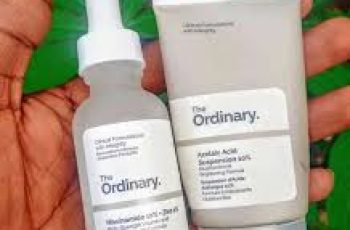Saururus Chinensis (Chinese Lizard’s Tail) in Skin Care
Saururus chinensis is an East Asian plant also called Asian Lizard’s tail, Chinese Lizard’s tail, or Sam-baekcho in Korean. Saururus chinensis from the Lizard tail plant is a new antiaging cosmeceutical ingredient that is also found in creams to treat hyperpigmentation.
Is Saururus Chinensis the best ingredient for your skin? The best way to find the right products is to shop by your Baumann Skin Type.
East asian plant species that is quickly becoming popular in western skin care
Versatile natural benefits from varied chemical structure
Safe for most skin types, and increasingly available
Skin Benefits of Saururus chinensis
Saururus chinensis has natural anti-inflammatory and antioxidant abilities that make this Lizard tail Plant ideal for soothing sensitive skin while treating wrinkles and dark spots.
Saururus chinensis is used to treat:
Acne
Aging Skin
Eczema
Hyperpigmentation
Melasma
Psoriasis
Rosacea
If you’re just looking for the best products with Saururus Chinensis, here are my favorites:
Is Lizard Tail Plant Extract Good for Your Skin?
The Asian Lizard Tail Plant has the following properties:
Anti-inflammatory
Antioxidant
Moisturizing
Skin Lightening
To find out if that’s what your skin needs in your daily routine, take our free quiz here!
Take the Quiz
Research on saururus chinensis
Evidence Based Research on Saururus Chinensis in Skin Care Products
Eczema and Atopic Dermatitis
Choi et al. showed that the leaves of S. chinensis prevented eczema skin rashes in mice. The lizard tail plant was thought to work by stimulating the Th1 cell immune response and modulating Th1/Th2 imbalance. (1)
Protection of Skin Against Skin Cancer
Lee et al. showed that Lizard Tail plant extract slowed growth human cancer cells. (2)
Anti-inflammatory Benefits of Saururus Chinensis
Sauchinone is found in Lizard Tail Plant. Bae et al. demonstrated that sauchinone gives S. chinensis some of its soothing properties by lowering tumor necrosis factor (TNF)-α synthesis by inhibiting the c-Raf-MEK1/2-ERK1/2 phosphorylation pathway. (3) Zhang et al. showed that an extract of S. chinensis leaves blocked expression of inflammatory genes by blocking the TAK1/AP-1 pathway. (4) The Asian Lizard tail plant blocks various different inflammatory pathways which explains its soothing and calming effects on sensitive skin.
You can learn more about inflammatory pathways in skin here.
Antioxidant properties of saururus chinensis
Antioxidant and Photoprotection Benefits of Saururus Chinensis
Sauchinone, found in the Lizard Tail plant, protects human skin cells (keratinocytes) from sun damage and blocks the upregulation of matrix metalloproteinase (MMP-1 ) enzymes that usually occur after UVB exposure and cause a break down of type 1 collagen in the skin. Sauchinone has antioxidant activity and suppresses extracellular signal-regulated kinase, c-Jun N-terminal kinase, and p38 MAPK signaling through the activation of oxidative defense enzymes. (5)
Skin Whitening and Lightening Effects of Chinese Lizard Tail Plant
Manassantin A and B found in S. chinensis blocks melanin synthesis by down-regulating the expression of tyrosinase or the TRP1 gene and inhibiting expression of microphthalmia-associated transcription factor (MITF) (6, 7). This cosmetic ingredient also blocks melanosome transport by interrupting the interaction between melanophilin and myosin Va. (8) Lizard tail extract also inhibits the melanogenesis signaling pathway activated by α-MSH, causing dose-dependent inhibition without causing cytotoxicity. The depigmenting activity of S. chinensis extracts may occur as a result of elevated activity of extracellular signal-regulated kinase (ERK). (2)
Conclusion
Lizard Tail extract is an exciting new skin care ingredient that blocks inflammation, damage form sun, aging, and production of skin pigment. It is ideal for skin types that suffer from inflammation and pigmentation such as sensitive skin with dark spots. The best way to know if this is the best ingredient for YOU is to know your Baumann Skin Type and shop for products based on your skin type.
DQH Can I use salicylic acid first and then vitamin C?
It’s easy to create a skincare routine, but knowing how to use it is another thing entirely. In most cases, if you’re not getting the desired skin results, it could be due to the layering of conflicting ingredients. So, is it possible that salicylic acid and vitamin C are such ingredients? Or are these active ingredients the duo that’s been missing from your skincare routine? If you want answers, stick around because today we are going to explain the benefits of salicylic acid and vitamin C and how they can be used in your daily life.
What are the benefits of salicylic acid for skin?
Salicylic acid is one of the most commonly used beta hydroxy acids and is favored by many people with oily, acne-prone skin. This acid is derived from willow bark, and unlike its water-soluble relatives (called alpha-hydroxy acids), salicylic acid is oil-soluble, which means it can penetrate deeper into the lower layers of the skin. Once it reaches the lower layers, it can help unclog pores of excess sebum, dirt, bacteria, debris, and impurities. This results in clearer skin tones and greater definition.
Not only does salicylic acid benefit the underlying layers, but the outer surface of the skin benefits as well. When applied to the skin, salicylic acid removes the buildup of dead skin cells. This is accomplished by breaking the bonds that hold dead cells to the surface. Over time, this can cause the complexion to look dull and prone to acne, blackheads, and other blemishes.
If you’d like to learn more about salicylic acid and how it can improve your skin, check out this dedicated blog post from a beauty insider.
What are the benefits of vitamin C for skin?
Vitamin C is considered one of the most powerful antioxidants, which means it is very effective at fighting free radicals and preventing them from causing further skin damage. Examples of free radicals include pollution, central heating, UV rays and harsh climate. They attack proteins, fats and cell membranes as soon as they come into contact with the skin, causing signs of premature aging such as fine lines and wrinkles as well as hyperpigmentation, flaky patches of skin and loss of elasticity.
Many people usually prefer to use vitamin C in their morning routine as this ingredient gives the complexion a radiant glow. You’ll also find that vitamin C can target areas of hyperpigmentation, plumping the skin and reducing the appearance of fine lines and wrinkles.
The thing about vitamin C is that there are a lot of outdated studies going back to the 1950s that describe vitamin C as an unstable skin component. Thanks to improvements in modern technology, this is no longer the case as all products now contain a stable form of vitamin C.
Visit The Beauty Insider to learn more about vitamin C. So please check out our blog post.
Can I use salicylic acid first and then vitamin C?
Yes, you absolutely can. In fact, it’s thought that using salicylic acid before using vitamin C ensures it penetrates faster and works faster.
This is an efficient way to utilize two power sources, and the reason has to do with pH. For example, the skin’s natural pH is about 4.7, making it slightly acidic. Salicylic acid and vitamin C are also both acidic, and you’ll find that vitamin C is absorbed quickly into the skin. Therefore, using salicylic acid beforehand can increase the acidity of the skin and allow vitamin C to penetrate into the skin faster.
While this is considered an effective way to combine two powerful ingredients, you need to be aware of your skin type and how it reacts to certain active ingredients. Even people with perfect, normal skin can experience skin sensitivity and irritation. Therefore, always consult a doctor or dermatologist before using any new products on your skin.
It’s also important to follow skin application rules. In this case, you need to use the product correctly to ensure you get the best results for your skin. If you’re not sure what I mean, the basic rule for skin is to start with the thinnest consistency and work your way up to the thickest consistency. This prevents a barrier from forming on the surface, preventing other active ingredients from penetrating the skin.
Can I use salicylic acid at night and vitamin C in the morning?
Yes, absolutely, this is considered the most effective way to get returns without any adverse side effects. This is because there is enough time between applications to ensure that the skin’s pH levels return to balance.
You’ll also find that Vitamin C is rich in antioxidants and is perfect for use in the morning to ensure your skin is protected and looking its healthiest. Due to the small size of salicylic acid molecules, it is an acid that is able to reach the deepest parts of the skin. While this is effective at keeping skin clear, it also increases the risk of irritation and photosensitivity. Therefore, many people prefer to use powerful BHAs in their evening routine without exposure to UV rays, pollution, or harsh weather.
Warning: If you avoid using sunscreen every day, none of these ingredients will do what your skin needs. The combination of chemical peels and powerful ingredients increases the risk of further damage to the skin’s surface. Use SPF 50 every day to keep your skin protected and your lipid barrier healthy, even on cloudy days, keeping your skin in top condition.



